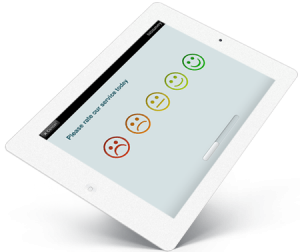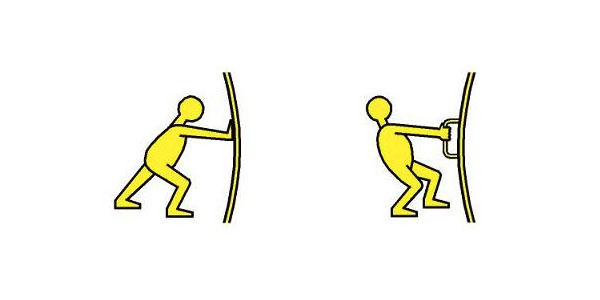Collect more data and ensure a positive experience for your responders
A how-to-guide on designing a better survey structure
There are many important aspects to consider when you are designing a survey. Each is good for it’s own purpose and depend in large by the nature of your survey. You might look solely on the forming of the questions and deal with bias and validity. You could also view the survey as an in-depth overview of several areas and create a large generic survey. Here at tabsurvey, we go for the simple, small survey that is easy on the eye and get a lot of answers. In similar vain as previous posts on placement and appeal, todays blog looks to designing a better survey structure that is easy to respond to and reflects well on you or your organization.

Often when a company or a person decide to work with surveys, it stems from a need for more information. This could be information about a specific subject i.e. customers, employees, happiness, brand perception etc. This need can come as an epiphany of suddenly realizing that there are areas of knowledge deficit (four stage competence building) or simply from new industry dynamic indicators. We believe that acknowledging areas of knowledge deficit is a major step for improvement (hey, we live from this need). However, there are often issues with the first few surveys that are designed. Today’s blog will go through some of the major issues that we see in surveys.
One concern when working with typical surveys is the abandonment rate – the percentage of which responders discontinue the survey. Research show, as a survey reaches 30 questions or more, the percentage of respondents who fulfil the entire survey decreases drastically – 10 percent dropout for every 20 questions asked (Research paper & SubscriptionInsider). This research is for the standard online survey taken at the respondents’ own leisure. This percentage sees a higher escalation with a physical location as you are ‘interrupting’ responders in their daily lives. Your customers will most likely not appreciate having to stand next to the cash register plotting in answers for more than a minute.
Why asking 30 questions is plain old rude
As we discussed in placement and appeal, the attraction rate is crucial to generate a lot of data. In essence, the attraction rate is the percentage of customers you can attract to your physical survey. If you wish to attract higher numbers of responders to your survey, you need consider a few things. A good idea is to state how many questions you are asking or how long the survey will take. If you downplay the time it will take, abandonment rate increases as customers become frustrated. This frustration might create an unfavorable attitude towards your survey or your brand. On the other hand, if you are transparent about your 35+-question survey, attracting responders becomes increasingly difficult with higher number of questions in your survey. In a sense a survey with Tabsurvey that has a lot of questions balances on a tradeoff between attraction-rate or abandonment-rate.
So how do you avoid the trade-off? The solution is simple.
Ask fewer questions

We see the best results when surveys are designed with less than 10 questions – ideally a maximum of 7 questions. This number of questions takes around 30 to 40 seconds to answer for the respondent. At the same time it yields enough data to compute correlations or delve into deeper insights.
You might now be thinking that 7 questions are not nearly enough to cover your need of information. Your need from the epiphany is more encompassing and 7 questions is not enough to cover your need. But 7 questions is actually a lot if you keep a clear focus on the purpose of your survey. There are several ways to gain the more specific knowledge with tabsurvey. For instance, if you are looking for causes, a multiple select question can cover what several questions can accomplish, in one. If you want specific knowledge on a target group then you can incorporate flows into your survey. So while the survey contains i.e. 13 questions, each responder will only be faced with 7 questions as the flow is created from previous answers.
Unfocused survey
One of the major pitfalls we see in surveys is managers’ that try to generate a numerous streams of data from the customers, jumping from one area of focus to another. These surveys are often characterized as large surveys, which cover a broad range of very different questions. These questions go from; factual information → purchase behaviour → brand perception → customer experience → employee performance → NPS all in one survey (not necessarily in that order).
Talk about question overload.
We recommend that you stay on topic (remember the focus of your survey). It is better to go in-depth with a physical survey than grasp at everything. If there are several areas you need information, then why not split the survey into part and conduct them through different channels or locations. Remember, it is free information given to you from the customers, so don’t transgress on their willingness to help.
If you are sitting at the end of this blog and still wondering why designing your survey is important then reflect back on the previous post. We, as in people, consume ideas and information. How this information is designed, impacts our attitude towards the sender. For a company who is using tabsurvey, remember that the way you communicate reflects back on your brand, your professionalism, the identity of the company and the general perception customers have of you.
Consider the effect on the customer if you start the survey with the message “help us improve – answer a few questions” and it actually takes 5 minutes to finish.
How does this reflect back on you?
Summary
Any person creating and working with surveys should always hold focus on what is important for the survey. To structure a survey that sends a good image of your company, work with flows so questions build upon previous answered questions. This sends the message that you are in a sense listening to your customers and aware of their previous answers. Next, to ensure a low rate of abandonment, stick to the agreed upon expectations of the survey – stay transparent in your dealings with customers. Lastly, to generate as many answers as possible, limit your questions to a maximum of 7. This is important to not transgress on customer’s willingness to give feedback.
Stay tuned for our next blog on the art of writing questions for optimal responses.
 Later that week, the store manager reviews the answers of the week, and notices your negative response. But she also thinks to herself: “Our average score is up from the week before, so I guess the new displays we had installed really worked!”
Later that week, the store manager reviews the answers of the week, and notices your negative response. But she also thinks to herself: “Our average score is up from the week before, so I guess the new displays we had installed really worked!”











